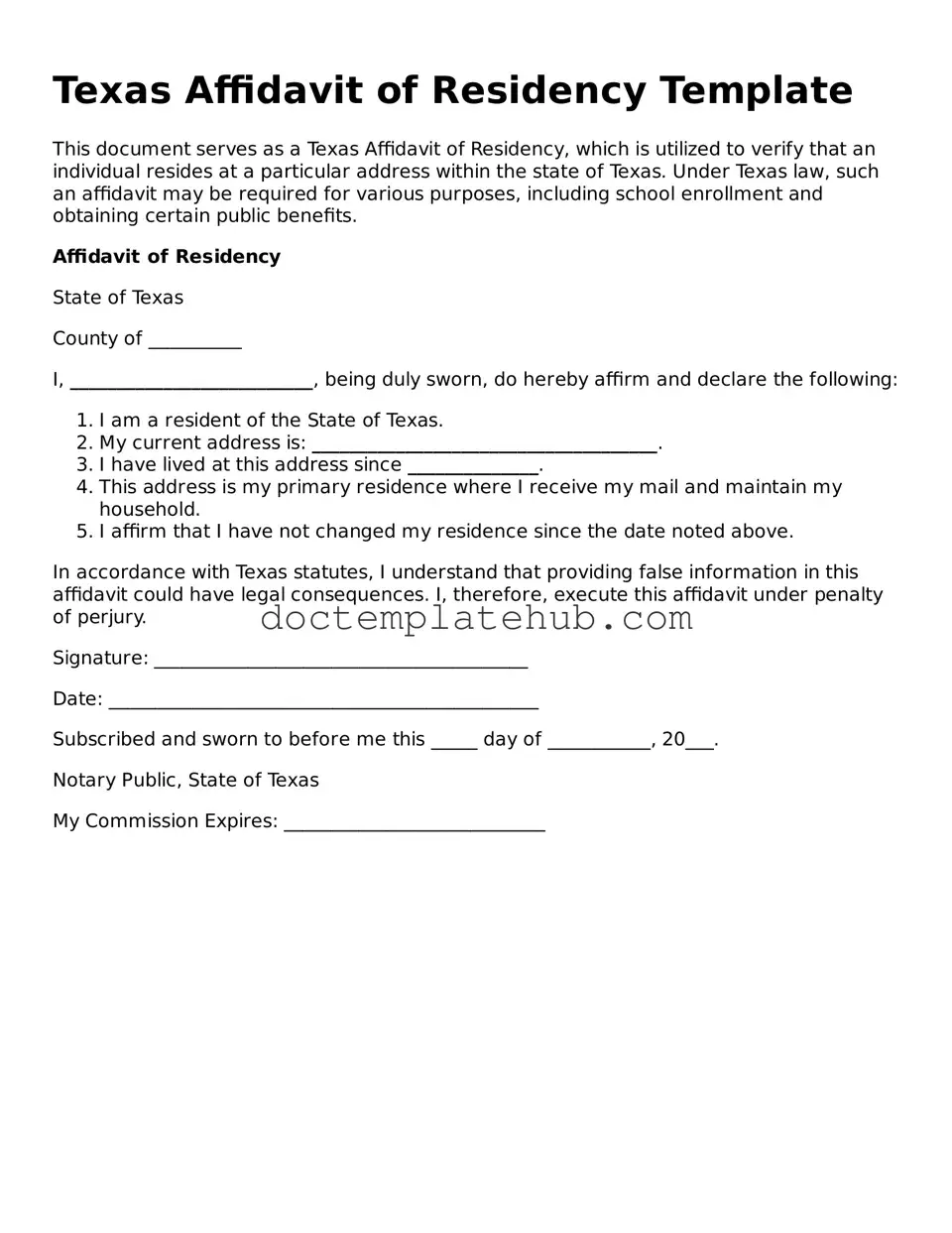What is the Texas Affidavit of Residency form?
The Texas Affidavit of Residency form is a legal document used to confirm a person's residence in Texas. It is often required for various purposes, such as enrolling a child in school, obtaining a driver's license, or for certain government benefits. This affidavit serves as a sworn statement, affirming that the individual resides at a specific address within the state.
Who needs to complete the Affidavit of Residency?
This form is typically needed by individuals who are establishing residency in Texas for the first time or those who are changing their residency status. Parents or guardians may also need to fill it out to prove their child's residency for school enrollment. It’s important to check specific requirements based on the situation, as different institutions may have varying guidelines.
How do I fill out the Affidavit of Residency form?
To complete the form, you will need to provide personal information such as your name, address, and contact details. You may also need to include information about your relationship to the person whose residency you are affirming, if applicable. Once filled out, the form must be signed in front of a notary public to ensure its validity. This step is crucial, as it adds a layer of authenticity to the affidavit.
Where can I obtain the Affidavit of Residency form?
The Affidavit of Residency form can typically be obtained from various sources, including school districts, government offices, and online from official state websites. It’s advisable to ensure you are using the most current version of the form, as requirements may change over time. If in doubt, contacting the relevant institution directly can provide clarity on where to find the form.
What happens if I provide false information on the Affidavit of Residency?
Providing false information on the Affidavit of Residency can have serious consequences. It may lead to legal repercussions, including potential criminal charges for perjury. Additionally, any benefits or services obtained under false pretenses could be revoked. It is always best to ensure that all information provided is accurate and truthful to avoid any negative consequences.
Is there a fee associated with filing the Affidavit of Residency?
Generally, there is no fee for completing the Affidavit of Residency itself. However, if you require notarization, there may be a small fee charged by the notary public. It’s a good idea to inquire about any potential costs beforehand. Additionally, some institutions may have their own fees associated with processing the affidavit, so checking with them is wise.
